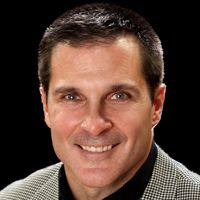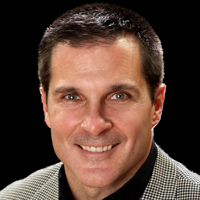5 Action Strategies for Financial Independence
Even those close to retirement can make a few simple moves to secure their futures. From HSAs to creative mortgage-payoff plans, every little bit helps.


If you are in the second half of your career and have a serious eye on being financially independent, there are five things I suggest you consider doing now.
1. Do what you can to be mortgage-free.
Retirees without a mortgage have it much easier than those who did not plan as well. If you have 25 years left on a 30-year mortgage and want to be financially independent or retired in 10 years, then refinance to a 10-year mortgage or add whatever is needed to be paid up in 10 years.
Another mortgage-payoff strategy that I love, but is seldom used, is to create a specific taxable investment account to accrue money in such a way that it would grow to a sum large enough to pay off your remaining mortgage balance in the year you desire. This way, you keep control over that money rather than giving it to the lender, and you maintain a larger interest deduction along the way. The key to this strategy is to have the money automatically saved from your checking account to your mortgage-payoff investment account. Without this automated discipline, the strategy could easily implode.
From just $107.88 $24.99 for Kiplinger Personal Finance
Become a smarter, better informed investor. Subscribe from just $107.88 $24.99, plus get up to 4 Special Issues

Sign up for Kiplinger’s Free Newsletters
Profit and prosper with the best of expert advice on investing, taxes, retirement, personal finance and more - straight to your e-mail.
Profit and prosper with the best of expert advice - straight to your e-mail.
2. Diversify away from your traditional work 401(k).
It usually makes sense to contribute to your 401(k) up to the match percentage, but for many people all of their retirement savings are locked into their 401(k)s or IRAs. The rude awakening for these people is that their account balances are not really all their money. There is a surrender change on the money they withdraw, and it’s called ordinary income tax. It’s whatever income tax rate the government happens to charge when you want your money out. Another potential pitfall to using a 401(k) as a retirement income stream is that Medicare premiums go up as your taxable income goes up. That’s like a tax to me if you pay a higher Medicare premium because your taxable income is higher.
The alternative is to fund AFTER-TAX accounts that generate tax-free or little taxable income. My favorite is the Roth 401(k) if your employer offers it. Your Roth 401(k) contribution is not tax-deductible, but the growth is tax-deferred, and when your contribution and the growth of the account are withdrawn it is income tax-free, as long as you’ve had the account for five years and are at least 59½. Love this. If your income qualifies, you can make a Roth IRA contribution as well and it works the same way.
One more idea is to forgo your traditional 401(k) and set up a tax-efficient investment portfolio with either ETFs, tax-efficient mutual funds or possibly individual stocks and municipal bonds. My point is not to tie up all your money in traditional IRAs and 401(k)s.
3. If you have a qualifying high-deductible medical insurance plan, you definitely should set up and maximum fund a health savings account.
Couples can put away $6,750 in 2017 (plus catch-up contributions of $1,000 more for those 55 and older) and it’s all federally income tax-deductible with no income restrictions. This account grows tax-deferred and the money comes out tax-free if used for qualified expenses. This is truly the best of all worlds. It can be used for Medicare premiums, doctor visits, prescriptions and much more. While this is true, I would not spend my savings from this account unless I absolutely had to. Why would I take money out of an account that has these amazing tax benefits if you could pull from savings and let this account grow?
4. Start planning for your legacy and chronic health care fund both at once right now.
The most efficient asset to leave your family is life insurance. The death benefit is income-tax free and delivered right when needed, guaranteed. I recommend using this vehicle (death benefit) as a permission slip to spend and enjoy the interest AND principal from your investment nest egg rather than preserving your principal until you are too old to enjoy it and figure out that you couldn’t spend it if you tried.
For example, a widowed client of mine wanted to leave her husband’s $400,000 401(k) to her two children. She refused to spend it despite the wishes of her children. To solve this issue, she bought a $400,000 life insurance policy in her 60s. She also takes an annual distribution of $6,000 to pay the premium. Now she is willing to take monthly withdrawals ($1,000/month) from that account knowing $400,000 will be passed on no matter what.
The life insurance you own at retirement frees you up to spend your investment money, not worrying about leaving it behind because the death benefit will fill that void. Ideally, you would construct the premiums to be paid off when you wanted to retire.
5. One of the biggest fears during retirement is the potential cost of chronic care in your old age.
There is a chronic care rider you can purchase with your life insurance that allows you, the insured, to take an advance on your death benefit while you are alive assuming you meet the chronic care rider criteria (usually that you cannot perform two of the six activities of daily living). Many policies let you take up to 4% of the death benefit per month (income tax-free) until you have taken out the entire death benefit. So a $200,000 policy would allow you to take up to $8,000/month. No receipts are needed, and you can spend the money any way you would like. Unlike long-term care insurance where it is “use it or lose it,” whatever you do not spend on chronic care will be passed on to the life insurance policy beneficiaries.
You can be financially independent without incorporating any of these strategies, but I believe strongly that you would be that much better off if you considered implementing each of these. Of course, these strategies are not for everyone and should be considered within the scope of each person’s financial situation.
Profit and prosper with the best of Kiplinger's advice on investing, taxes, retirement, personal finance and much more. Delivered daily. Enter your email in the box and click Sign Me Up.

Brad Rosley, CFP®, has been president of Fortune Financial Group (FFG) since 1996. FFG runs a virtual planning practice working with clients from all over the country. Rosley specializes in helping clients successfully navigate retirement related planning goals and construct investment portfolios to meet their personal life goals. His book "Beyond Money" made the Amazon best-seller list in the summer of 2018.
-
 Is Home Insurance Tax Deductible?
Is Home Insurance Tax Deductible?With home insurance rates on the rise, you might be hoping to at least claim the cost as a tax deduction. Here's what you need to know ahead of tax season.
-
 The December Jobs Report Is Out. Here's What It Means for the Next Fed Meeting
The December Jobs Report Is Out. Here's What It Means for the Next Fed MeetingThe December jobs report signaled a sluggish labor market, but it's not weak enough for the Fed to cut rates later this month.
-
 Trump Signals Plan to Ban Institutional Investors From Buying Single-Family Homes
Trump Signals Plan to Ban Institutional Investors From Buying Single-Family HomesThe president says the move could improve housing affordability. Here’s what the data shows about investor ownership, recent buying trends and what it could mean for homebuyers.
-
 4 Simple Money Targets to Aim for in 2026 (And How to Hit Them), From a Financial Planner
4 Simple Money Targets to Aim for in 2026 (And How to Hit Them), From a Financial PlannerWhile January is the perfect time to strengthen your financial well-being, you're more likely to succeed if you set realistic goals and work with a partner.
-
 I'm a Wealth Adviser: Everyone Needs an Estate Plan (Seriously, Even You)
I'm a Wealth Adviser: Everyone Needs an Estate Plan (Seriously, Even You)If you've acquired assets over time, even just a home and some savings, you have an estate. That means you need a plan for that estate for your beneficiaries.
-
 How to Be a Smart Insurance Shopper: The Price Might Be Right, But the Coverage Might Not Be
How to Be a Smart Insurance Shopper: The Price Might Be Right, But the Coverage Might Not BeChoosing the cheapest policy could cost you when you have a loss. You'll get the best results if you focus on the right coverage with the help of a good agent.
-
 7 Reasons Why Your Portfolio Needs Short-Term Bond ETFs
7 Reasons Why Your Portfolio Needs Short-Term Bond ETFsMoney market funds are a safe option for your cash, but ultra-short and short-term bond ETFs also deserve consideration. Here are seven reasons why.
-
 I'm a Wealth Planner: Forget 2026 Market Forecasts and Focus on These 3 Goals for Financial Success
I'm a Wealth Planner: Forget 2026 Market Forecasts and Focus on These 3 Goals for Financial SuccessWe know the economy is unpredictable and markets will do what they do, no matter who predicts what. Here's how to focus on what you can control.
-
 I'm a Financial Adviser: Why In-Person Financial Guidance Remains the Gold Standard
I'm a Financial Adviser: Why In-Person Financial Guidance Remains the Gold StandardFace-to-face conversations between advisers and clients provide the human touch that encourages accountability and a real connection.
-
 This Is How You Can Turn Your Home Equity Into a Retirement Buffer
This Is How You Can Turn Your Home Equity Into a Retirement BufferIf you're one of the many homeowners who has the bulk of your net worth tied up in your home equity, you might consider using that equity as a planning tool.
-
 Feeling Too Guilty to Spend in Retirement? You Really Need to Get Over That
Feeling Too Guilty to Spend in Retirement? You Really Need to Get Over ThatAre you living below your means in retirement because you fear not having enough to leave to your kids? Here's how to get over that.